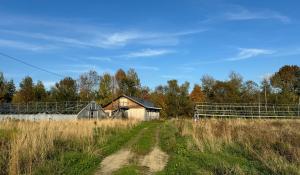
You may be asking, “Why Starbucks?” when you see GMO Inside's “What the Starbucks: From Crop to Cup” infographic covering the impact of sourcing industrial conventional milk.
Why focus on one company and the milk it is using when there are so many pressing environmental issues going on in our country and around the world, like the drought in California? It is estimated that CA’s wells only have 1 year’s supply of water and that the snowpack the state depends on is only 8 percent of what it should be. These are concerning facts considering that CA produces 50 percent of the nation’s fruits and veggies, including 90 percent of the grapes, broccoli, almonds, and walnuts. Yet Starbucks milk is more connected to the CA drought than it appears.
Considering CA’s drought, dairy production is one of the most pressing issues, yet it receives very little attention. California is the top dairy producer in the nation, with nearly 1.78 million dairy cows. The USDA calculates that dairy farms require 150 gallons of water per cow per day. Industrialized dairy cows are fed a diet of GE crops made up of corn, soy, alfalfa, and cotton. Alfalfa is California’s most water-intensive crop; none of that production goes directly to human consumption.
Overall our goal is to open up the conversation to discuss the deeper issues within the dairy supply chain: animal welfare, pollinator health, antibiotic overuse, and the environmental and health impacts of CAFOs. Starbucks milk provides us with an excellent lens and connecting point to do so. Dairy and meat are large contributors to environmental problems but there are so many deeper issues that need to be discussed. This campaign creates a meeting point to discuss them all in connection to one another since they are ultimately all interconnected. In order to create a more sustainable food system it is important that we address all of the impacts of dairy and other forms of industrialized agriculture.
We call on Starbucks specifically because it is one of the largest purchasers of milk in the US, purchasing over 140 million gallons of milk each year. This volume of milk is expected to grow as the company plans to add 1 store every 6 hours over the next five years. It is a powerful company and has the ability to create systemic change by guaranteeing contracts for farmers, a necessary incentive to move beyond the industrialized system toward more organic and sustainable practices. Starbucks is also a visible company that cares much about its public perception and being seen as an agent of good. Read more about our specific Starbucks plan for change and reasoning.
So yes, while the campaign is targeted at Starbucks, it really is about so much more. To learn more about the industrial convention milk supply chain read the full report that accompanies the infographic.






